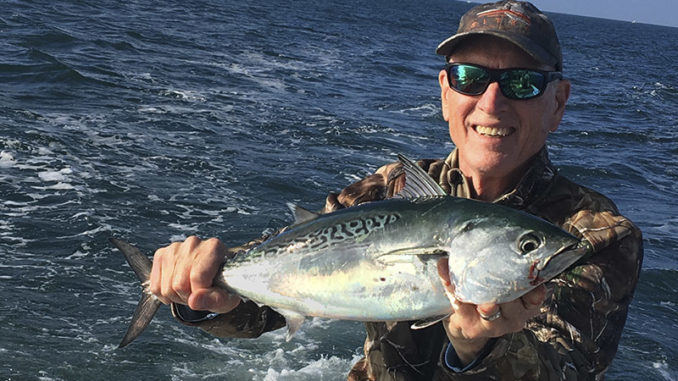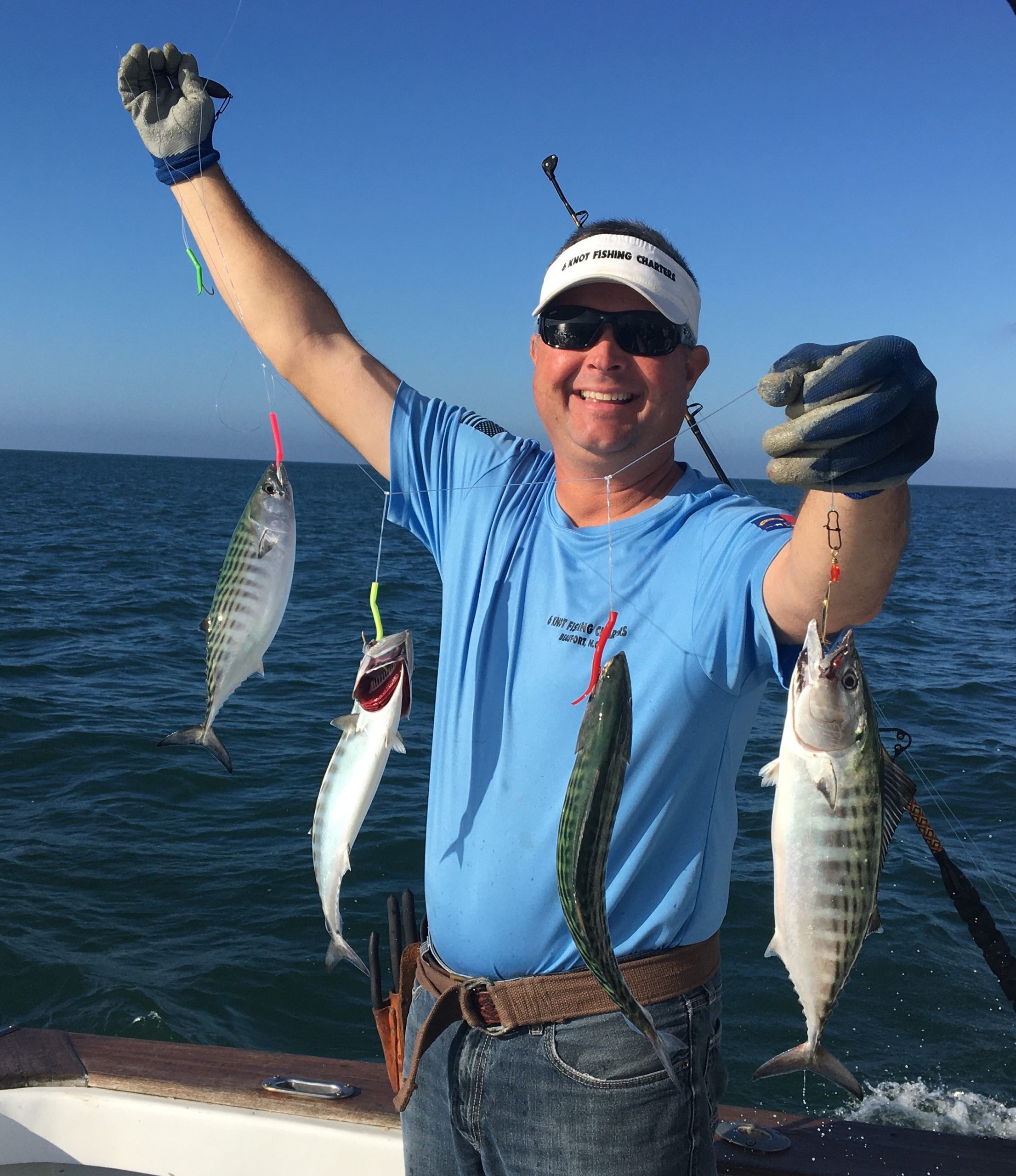
Spanish are MIA, but false albacore, bonito are plenty for Cape Lookout anglers
The “SNAP” of the line bursting from the outrigger clip is an unmistakable noise for fishermen who troll in the ocean, and nearshore guide Ralph Mason of Beaufort, NC got to hear it close to a dozen times this past Thursday.
“What a sound!” Mason exclaimed as he grabbed a rod and handed it to angler Dean Harrison of Clemmons as the line screamed off the reel. “That’s just a great sound.”
Ten minutes later, Mason had hold of the leader and was lifting a false albacore in the neighborhood of 13 pounds into the boat for a couple of quick photos and a head-first release back into the waters off North Carolina’s Cape Lookout.
Mason, who runs a 34-foot Buddy Harris, the “Southern Breeze,” for his 6 Knot Fishing Charters, has caught dozens and dozens of the football-shaped cousins of the tuna family over the past week, but the bite has never been better than this past week.
Yes, Spanish mackerel have been scarce, but there have been plenty of false albacore, aka “Fat Alberts,” along with their edible cousins, Atlantic bonito, plus bluefish, in the waters along the cape. Mason’s party on Thursday caught about 15 albacore, five bonito and as many bluefish, trolling in about 40 feet of water almost from one end of Shackleford Banks to the other. They were following groups of gulls and terns that were shadowing schools of gamefish. The birds marked the fish slashing glass minnows at the surface, attracting plenty of attention from a handful of boats.
Cover the water column
Most of Mason’s success came on No. 1 or No. 0 Clarkspoons fished on long leaders behind trolling birds – hard-plastic lures that resemble flying fish – that darted to and fro, 100 yards behind the boat. A few bigger albacore fell to a No. 5 drone spoon fished on a long leader behind a planer, while the bonito seemed to prefer a mackerel tree rig – a trolling version of the Sabiki rig with tiny, colorful plastic tubes hiding hooks, with a Clarkspoon trailing the pack. Early in the trip, that lure went through a pod of bonito, and four of them wound up in the fish box on the same rod.

Mason trolled baits behind six or seven rods at a time. Two spoons behind birds were on outrigger clips, the others behind planers or rigged with trolling weights.
“This way, we can cover the entire water column,” said Mason (336-926-2953, www.6knotfishingcharters.com). “The planers get the lures down 12 to 15 feet, the trolling weights 2 to 5 feet, and the spoons behind the birds are at the surface. Some days, they want all gold (spoons), and some days they want only silver,” he said. “You’ve got to be able to change when you can see what they’re biting the most that particular day.”
Mason’s tackle included Excalibur Marine tournament series rods mated with Penn Squall 30LW reels, the extra heft needed because of the diving planer boards.
“We have been getting a good mixed bag of albacore, bonito, Spanish and bluefish the past couple of weeks,” he said. “I think the Spanish might have moved on, but the albacore bite has been great, with the others mixed in.”
Albacore are identified by the worm-like markings above their lateral lines, Bonito have straight, dark horizontal lines on their backs. Albacore are generally considered inedible – they are often cut up and used as bait strips for offshore trolling, or as bait chunks when a school of dolphin is located and attracted to a boat’s transom.



Be the first to comment